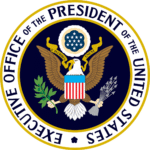Welcome to ASDWA’s Critical Infrastructure Protection section. Here you will find a comprehensive collection of Internet resources dealing with security and protection for drinking water infrastructure.
ASDWA/EPA Webinar: Hazard Mitigation Resources (September 15, 2016)
ASDWA and EPA collaborated on a webinar to consider how state primacy agencies can work with both their state hazard mitigation offices and their utilities to promote, fund, and implement hazard mitigation projects; walk through the Guide, and hear from state primacy staff and mitigation officers about how they have collaborated in the mitigation arena.
- Webinar Video Link: https://youtu.be/qOoDhj1arc4
- Hazard Mitigation Guide Link: Hazard Mitigation for Natural Disasters (PDF)
- State Hazard Mitigation Officers Link: www.fema.gov/state-hazard-mitigation-officers
ASDWA/EPA Webinar: Drought Response & Mitigation Strategies for States (February 25, 2016)
Webinar showcasing EPA’s new Drought Response and Recovery Guide for Water Utilities and an overview from Oklahoma’s Department of Environmental Quality on their work with selected water utilities to respond to the recent drought.
Video of the Webinar: https://youtu.be/hb5cjwYhLFE
Slides from the Webinar:
ASDWA/EPA Webinar: Power Resiliency at Water Utilities: What States Can Do (August 5, 2015)
Webinar focused specifically on state activities that can be used to help water utilities (large and small) better understand how and why they need to connect and collaborate with their power providers in the event of an emergency.
Video of the Webinar: https://youtu.be/06BBcobzwSY
Slides from the Webinar:
- Bill Gilday – EPA-ASDWA PWSs & Resiliency (Aug 5 2015)
- Lauren Wisniewski – EPA-ASDWA PWSs & Resiliency (Aug 5 2015)
Flood Resilience: A Basic Guide for Water and Wastewater Utilities (March 31, 2015)
Specifically designed for small- and medium-size water and wastewater utilities, this Guide is easy to use and includes interactive worksheets, instructional videos, and flood maps. The powerpoint can be used as a train-the-trainer outline for state staff in their work with smaller systems and to pass the knowledge along to drinking water program colleagues and to their assistance providers. Below please find:.
- Video of the Webinar: https://youtu.be/TMTd5Kyiug4
- A powerpoint presentation (with speaker notes) that serves as a training tool: ASDWA-EPA Webinar on Flood Resilience Guide with notes
- A flyer/fact sheet that describes the Guide and its practical implementation: Flyer for Flood Resilience Guide v-1
States and WARNs Collaborate – Five Examples Webinar (December 2014)
On December 17, ASDWA’s Security Committee hosted a webinar to showcase how five states – California, Utah, New Hampshire, New York and Florida – support, interact with, and sustain their state’s WARN. Representatives from state drinking water programs, EPA Regional and Headquarters staff, and all WARN Chairs were invited to join with ASDWA to explore the different approaches that can be used in support of state WARN programs. Attendees learned about several different models of collaboration and partnership between state drinking water programs and state WARNs.
- Video of the Webinar: http://youtu.be/IjTvajdv92g
- All presentations from Webinar: State-WARN Webinar Presentations
- Webinar Summary and Q&A: States & WARNs – Working Together Summary
ASDWA/EPA WEBINAR: Continuity of Operations Plan (COOP) Template for Drinking Water and Wastewater Laboratories – September 2014 – EPA’s Water Security Division’s (EPA WSD) Water Lab Alliance (WLA) and ASDWA hosted a joint webcast on the Continuity of Operations Plan (COOP) Template for Drinking Water and Wastewater Laboratories. The COOP Template is designed to help state, utility, and private laboratories enhance the reliability of critical laboratory operations during a crisis. Instructions for Continuity of Operations Plan Template for Drinking Water and Wastewater Laboratories can be accessed at: http://water.epa.gov/infrastructure/watersecurity/wla/index.cfm.
Video of the Webinar: http://youtu.be/MnF4q8tBi6s
If you have any questions, please email WLA@epa.gov.
ASDWA/NEMA WEBINAR: Successful Partnerships: How State Primacy and Emergency Management Agencies Work – April 2014. Hosted by ASDWA’s Security Committee, this webinar showcases successful partnerships between state drinking water programs and state emergency management agencies.
Video of the Webinar: http://youtu.be/VsPaM5FfqxQ
Presentation Slides from the Webinar:
- Intro and Logistics – Kevin Tingley, EPA
- Tennessee – Cecil Whaley & Wayne Muirhead, TN
- Iowa – John Benson & Michael Anderson, IA
- Texas – Mario Chapa & Alex Hinz, TX
Questions from the Webinar:
- Roadmap to a Secure & Resilient Water Sector – 2017
This 2017 Roadmap updates priority activity areas for action over the next five years as identified by the Water Sector Coordinating Council and the Government Coordinating Council. It reflects the Sector’s considerable efforts to expand mutual aid and assistance, develop critical Water and Wastewater Sector security standards, enhance local, state and Federal partnerships, address cybersecurity concerns, provide research and studies, and release new risk assessment tools designed to enhance preparedness and resiliency. - Water Sector Cyber Security Brief for States: During 2016, ASDWA’s Security Committee worked with EPA’s Water Security Division to develop a “cyber basics” information sheet that states could use as a cyber “conversation starter” to engage utilities in discussions as to why cyber protections are important; how they might get started; and how a simple checklist can advance their utility’s resilience.
- Presentations and Summary from ASDWA’s 2016 Security and Resiliency Workshop (March 23-24, 2016)
Click to download presentations from ASDWA’s OneDrive - Water Emergency Roundtable – Outline for Discussion
ASDWA’s Drinking Water Security Committee partnered with EPA and the Evanston, Illinois Water Utility to create a “Water Emergency Roundtable Discussion Outline.” The Discussion Outline is scaled toward the needs of smaller water systems; creates a step-by-step process to host a discussion with critical customers about their needs and expectations during a water emergency. - States & WARNs – Working Together
Between September 2015 and June 2015, ASDWA’s Security Committee and EPA’s Water Security Division worked together on a three-phase initiative to look at state drinking water programs’ relationship with state WARNs. Phase 1 captured state input on working with their WARNs. Phase 2 provided five examples of successful collaborations between states and their WARNs. Phase 3 offered insights into how states can support their WARNs.- Phase 3: State WARN Perspectives Highlights Fact Sheet (June 2015)
The State WARN Perspectives Highlights fact sheet offers insights into the various methods that state drinking water programs use to support the WARN programs. It also showcases several successful State-WARN collaborations that may inspire other states and WARNs to work more closely together. Click States and WARNs Working Together to view/download the document. - Phase 2: States & WARNs Collaborate – Five Examples Webinar (December 2014)
ASDWA’s Security Committee hosted a webinar to showcase how five states – California, Utah, New Hampshire, New York, and Florida – support, interact with, and sustain their state’s WARN and explore the different approaches that can be used in support of state WARN programs.
Video of the Webinar: http://youtu.be/IjTvajdv92g
All presentations from the webinar: State-WARN Webinar Presentations
Webinar Summary and Q&A: States & WARNs – Working Together Summary - Phase 1: State WARN Perspectives Response Summary (September 2014)
ASDWA’s Security Committee invited state drinking water program security coordinators to provide input and perspective on the Water & Wastewater Alert Response Network (WARN) efforts in their states; the types of support they are able to provide for the WARN; and how primacy agencies and WARNs interact. Thirty-two provided input/response to 19 questions. State WARN Perspectives.
- Phase 3: State WARN Perspectives Highlights Fact Sheet (June 2015)
- Water Sector Cybersecurity Strategy – Final Recommendations (April 2015)
In 2014 and 2015, members of the Water Sector Government Coordinating Council (Federal and state government representatives) and the Water Sector Coordinating Council (water and wastewater utility representatives) collaborated as a joint working group to identify the best path forward for the Water Sector “…to promote and facilitate use of the National Institute of Standards and Technology (NIST) Framework for Improving Critical Infrastructure Cybersecurity.”Working from objectives founded in cyber outreach and training needs; closing gaps in cyber guidance, tools, and resources; and identifying measures of success in the Water Sector, the working group formulated recommendations for action – increased motivation, enhanced capability, and development of a stronger cyber security structure. The complete report is available here for download. - Enhancing Security Resiliency
During 2013, ASDWA’s Security Committee and EPA’s Water Security Division produced two documents to offer states some low cost/no cost ways to enhance their own security posture and provide additional support for their water systems as they strive to be resilient in the face of natural disasters and intentional security breaches. BRIDGING THE GAP: Coordination Between State Primacy Agencies and State Emergency Management Agencies focuses on collaborative opportunities between state primacy and emergency management agencies when an incident requires state involvement. (February 2013) - STATE DRINKING WATER PROGRAM All Hazards Preparedness, Mitigation, Response and Recovery Checklist provides state drinking water programs with a checklist of actions that should be considered before, during, and after an emergency. (July 2013)
- Water Sector Councils Update Strategic Roadmap for Security (2013)
The Water Sector Coordinating Council and the Water Sector Government Coordinating Council have updated the Roadmap to a Secure & Resilient Water Sector, designed to highlight progress and identify new and ongoing priority activities needed to improve Water Sector resilience. Download 2013 Roadmap to a Secure & Resilient Water Sector.
- Water Sector Workgroup Produces Risk Assessment Analysis (2011)
EPA and DHS, through the Critical Infrastructure Protection Advisory Council (CIPAC), convened a CIPAC Water Sector Risk Assessment Methodology work group to: (i) examine the three risk assessment tools (SEMS, ARAM-W, and VSAT) relative to the requirements of the new AWWA/ANSI/ASME J100 Standard, and (ii) determine what modifications would be necessary for the three tools to be compliant with the J100 Standard. The final report is attached. The report should be considered a technical document, as it describes and clarifies the gaps between each of the three tools and the J100 Standard and includes recommendations as to the specific approach for addressing these gaps in each of the three tools.
- All-Hazard Consequence Management Planning for the Water Sector (All-Hazard CMP) (2009) helps drinking water and wastewater utilities incorporate all-hazard consequence management planning into their emergency preparedness, response, and recovery plans and programs. The All-Hazard CMP was produced by a Workgroup made up of drinking water and wastewater utilities, Water Sector associations, and representatives of state and Federal water programs. It includes:
— Customizable lists of preparedness, response, and recovery actions that will improve resiliency across all hazards.
— Consequence-specific lists of actions for potential hazards that are most relevant to drinking water and wastewater utilities.
— Example incident-specific flow charts and checklists developed by a utility with links to the downloadable and customizable versions online.
— Information on how the National Incident Management System (NIMS) and the Incident Command System (ICS) are used in preparedness and during response and recovery.
- Critical Infrastructure Partnership Advisory Council: Metrics Workgroup for Water Final Report – February 2008
The Critical Infrastructure Partnership Advisory Council (CIPAC) Metrics Workgroup for Water was convened to meet two objectives: develop a national performance measurement system and one that aligns the 14 Features of an Active and Effective Security Program with the Water SSP goals and objectives. CIPAC Metrics Working Group Report
- Critical Infrastructure Partnership Advisory Council: Water Sector Decontamination Working Group – August 2008
This Critical Infrastructure Partnership Advisory Council (CIPAC) Working Group was charged with identifying and prioritizing key system decontamination issues for the Water Sector and making recommendations to address the identified issues. CIPAC Decon Working Group Report
- EMAC Interstate Mutual Aid Fact Sheet 10/07 Fact sheet developed by EPA’s Water Security Division to explain how the Emergency Management Assistance Compact (EMAC) can provide a conduit for water utilities to share local resources between Water and Wastewater Agency Response Networks (WARNs) and other public entities in different states.
- Utilities Helping Utilities: An Action Plan for Mutual Aid and Assistance Networks for Water and Wastewater Utilities 4/06 – AWWA’s white paper, Utilities Helping Utilities: An Action Plan for Mutual Aid and Assistance Networks for Water and Wastewater Utilities, offers a thorough step-by-step approach on where and how to begin, what to consider, and who should be considered as key participants. The document is broad enough to apply to a wide range of water and wastewater utilities – large and x-small, public and private, urban and rural. It includes a model agreement, describes differing approaches, and offers insights into how to adapt the examples to meet differing needs. This paper also acknowledges the need for collaboration with state primacy agencies and emphasizes the need for coordination with appropriate local, state, and Federal agencies.
- Utilities Helping Utilities: An Action Plan for Mutual Aid and Assistance Networks for Water and Wastewater Utilities 4/06 – NRWA document encouraging their state affiliates to organize and manage a mutual aid network for water and wastewater systems. As presented, the document calls out what a state rural water affiliate should be prepared to do as a core responder within a networked structure. The emphasis is on how state rural water affiliates can and should coordinate with FEMA and includes detailed discussions on appropriate equipment and materials for effective response by the state affiliate organizations. The document also includes a model mutual aid agreement for water and wastewater utility use. PLEASE NOTE: NRWA’s approach differs slightly from the approach described in AWWA’s White Paper.
- Office of Infrastructure Protection’s Education, Training & Outreach Resources – FACT SHEET (2/16)
This fact sheet provides information on available DHS training resources for state security coordinators and other key partners.
- Law Enforcement/Water Security Training Tools (12/07)
Protection of Water Sector facilities requires an integrated and coordinated approach among Federal agencies, state and local governments, and the private sector. Two training tools – a workbook and a CD – focus on what law enforcement personnel need to know about drinking and wastewater utility security.Law Enforcement/Water Security Training Books: Workbooks for law enforcement personnel to learn more about the water and wastewater industries, as well as what water utilities are doing to protect themselves and to respond to contamination threats and incidents. Short training modules allow for a very flexible training schedule. Law Enforcement /Water Security Training CD: Designed to allow law enforcement to learn more about the water and wastewater industries using an audiovisual format. The CD is comprised of short 10-12 minute modules to introduce law enforcement to the components of a water system and the potential vulnerabilities. To obtain a copy of the CD and for more information on this initiative, please contact Maureen McClelland in EPA Region 1 at mcclelland.maureen@epa.gov. - Recovery Practices Primer (9/08)
The Recovery Practices Primer is the latest in the group of products developed by the Water Infrastructure Security Enhancement (WISE) partnership. That partnership represents a collaborative effort among the American Water Works Association (AWWA), Water Environment Federation (WEF), and the American Society of Civil Engineers (ASCE) to support water and wastewater utility needs in the physical security arena.This Primer draws direction from real world utility security experiences in disaster mitigation and restoration. It is not intended to be a comprehensive, stand alone guide. Rather it supports and complements other emergency preparedness, planning, and response security documents designed for use by water and wastewater utilities.
- “Top Ten” Luggage Tag for Local Emergency Planners 5/05 – EPA Developed this “Top Ten” list as a luggage tag to highlight ten ways local emergency planners can work with their water utilities on preparation and response efforts before and/or during a drinking water security incident.
- EPA Emergency Response Plan Guidance for Small and Medium Systems 4/04 – EPA developed this document for community water systems serving a population between 3,301 and 99,999 as they develop or revise Emergency Response Plans (ERPs).
- EPA Response Protocol Toolbox: Planning for and Responding to Contamination Threats to Drinking Water Systems – EPA designed the Toolbox to help water utilities, laboratories, emergency responders, state drinking water programs, technical assistance providers, and public health and law enforcement officials effectively and appropriately respond to intentional contamination threats and incidents. Click on the links below to view each module.
- “Top Ten List: Water Supply Emergency Preparedness and Security for Law Enforcement” – Flyer for display in local municipal facilities to help coordination between law enforcement, water supply industry, and public health officials.
- “Top Ten List Visor Card” – Scroll down for the visor card version of the above flyer.
- Security Vulnerability Self-Assessment Guide for Small (3,300-10,000) Systems 11-02
- Cover Letter – Letter from ASDWA and NRWA to EPA, dated 11/13/02, trasmitting two documents – a “Security Vulnerability Self-Assessment Guide for Small Drinking Water Systems Serving Populations Between 3,300 and 10,000” and a “Utility Guide for Security Decision Making.”
- Security Vulnerability Self-Assessment Guide for Small Drinking Water Systems Serving Populations of 3,300 and 10,000 – A vulnerability assessment guide for systems serving between 3,300 and 10,000 that meets all the elements of a vulnerability assessment under the “Public Health Security and Bioterrorism Preparedness and Response Act of 2002.” The guide was developed by ASDWA and NRWA in cooperation with the U.S. EPA.
- A Utility Guide for Security Decision Making – A flow diagram and recommendations developed by ASDWA and NRWA to assist drinking water systems of all sizes to prepare, evaluate, and respond to security-related incidents.
- Security Vulnerability Self-Assessment Guide for Very Small (<3,300) Systems 6-02
This Security Vulnerability Self-Assessment Guide developed by ASDWA and NRWA in consultation with EPA, is targeted for drinking water systems serving less than 3,300 people and is designed to help these systems assess their critical components and identify security measures thA Utility Guide for Security Decision Makingat should be implemented. The document is provided electronically in MS Word and .pdf formats that are intended for states and trainers to use, distribute, copy, add specific contact names, and customize for the locality of each system as appropriate. The document includes an emergency contact list, a phone threat identification checklist, and states may wish to attach their model emergency response plans as well.- Cover Letter [PDF]
- Security Vulnerability Self-Assessment Guide [PDF Version]
- Security Vulnerability Self-Assessment Guide [Word Version]
- Physician Preparedness for Acts of Water Terrorism Website 7/03 – Free online reference guide for healthcare providers, public health practitioners, and water utility professionals.
For more information on available tools and resources from EPA, please go to: https://www.epa.gov/sites/production/files/2016-08/documents/wsd_products_and_services_lits_2016_508_compliant.pdf





